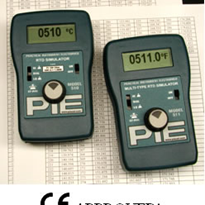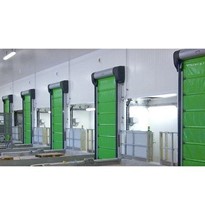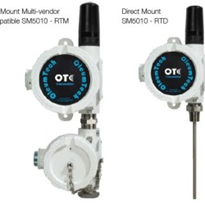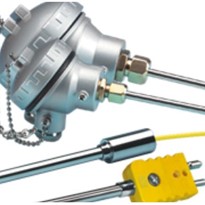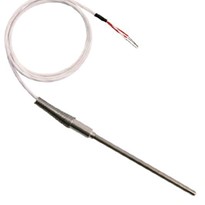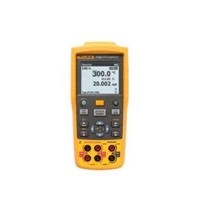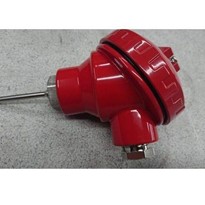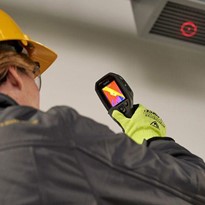What is an RTD?
A resistance temperature detector, also known as an RTD or resistance thermometer, is a type of temperature sensor. An RTD consists of a sensing element, wires to connect the sensing element to the measurement instrument, and support to position the sensing element in the process.
A PT100 sensor is the most common type of Resistance Thermometer (RTD). These sensors are a well-liked choice in many industries, mainly laboratories and industrial processes. The main reason for their use is due to their stability and accuracy. They are superior measuring instruments that provide confidence in terms of repeatability. Be assured that you will get the same results for each temperature readout. >RTDs are categorised into industrial, as well as general purpose. Each type is available as a PT100, PT250, PT500, and PT1000. (“Pt” is the symbol for platinum, “100” for the resistance in ohms at 0 °C). is defined as an electrical resistance between two points of a conductor when a constant potential difference of one volt, applied to these points, produces in the conductor a current of one ampere, the conductor not being the seat of any electromotive force. … These are called linear resistors.
How do RTDs work?
RTDs are designed to ensure precise and repeatable temperature versus resistance characteristics. The type of material used in RTD construction will determine the limits on the temperature the RTD can be exposed to. The sensing element in an RTD is an electrical resistor that changes the resistance value as the temperature changes. The change in resistance with temperature happens at a predictable rate and can be measured to provide the temperature of a material of process.
The sensing element in an RTD typically contains either a coil of wire or a substrate with an etched film of platinum. The use of extension wires attached to the sending element allows the electrical resistance to be measured from a distance away from the process or material being measured. A protective sheath (normally stainless steel) houses the sensing element. Platinum is typically the material of choice in an RTD as this allows for a larger temperature range and it is a more stable material. Nickel and copper can also be used in RTD construction if a lower temperature range is required. Table 1. Outline usable temperature ranges for each material.
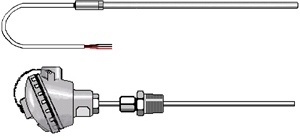
| Table 1: Sensing Element Materials and Temperature Limits | |
| Material | Usable Temperature Range |
| Platinum | -200°C to 850°C |
| Nickel | -100°C to 315°C |
| Copper | -75°C to 150°C |
The type of wire insulation used in an RTD also influences the temperature an RTD can be exposed to. Table 2A. refers to the most commonly used wire and insulation materials and their temperature limits. Table 2B. refers to the wires that connect the sensing element to the control instrument or readout and temperature limits. Typical choices for wire insulation include nickel, nickel alloys, tinned copper, silver-plated copper or nickel-plated copper.
| Table 2A: Connecting Wire Temperature Limits – Construction | |
| Wire / Insulation Materials | Maximum Usage Temperature |
| Nickel Plated Copper/TFE Teflon Insulated | 250°C |
| Solid Nickel Wire | 650oC |
| Solid Copper Wire | 300oC |
| Table 2B: Connecting Wire Temperature Limits – Extension | |
| Wire / Insulation Materials | Maximum Usage Temperature |
| Tinned Copper/PVC Insulated | 105°C |
| Silver Plated Copper/FEP Teflon Insulated | 205°C |
| Silver Plated Copper/TFE Teflon Insulated | 250°C |
| Nickel Plated Copper/TFE Teflon Insulated | 250°C |
| Nickel Plated Copper/Fibreglass Insulated | 480°C |
For RTD construction, there are two methods most used. The most common is to place the RTD element and attached wires into a metal tube with a closed-end. The tube is packed with a vibration dampening and/or heat transfer material, alumina powder in most cases, and seal the open end with silicone, epoxy, or ceramic cement.
An alternate construction method is the use of a mineral insulated metal sheath (MIMS) cable. The RTD element is inserted into a drilled hole and attached to nickel or copper wires insulated by Magnesium Oxide (MgO). The end is also insulated with MgO and welded closed. The other end has extension wires attached prior to sealing.
Once the temperature range and application has been determined, Pyrosales will select the most suitable materials and method of construction of the RTD.
2, 3 or 4 wire configuration
2-wire construction is the least accurate. 2-wire RTDs tend to be used with short lead wires or where close accuracy is not required.
3-wire construction is the most popular choice for industrial applications, whilst 4-wire construction is used in laboratories where close accuracy is imperative.
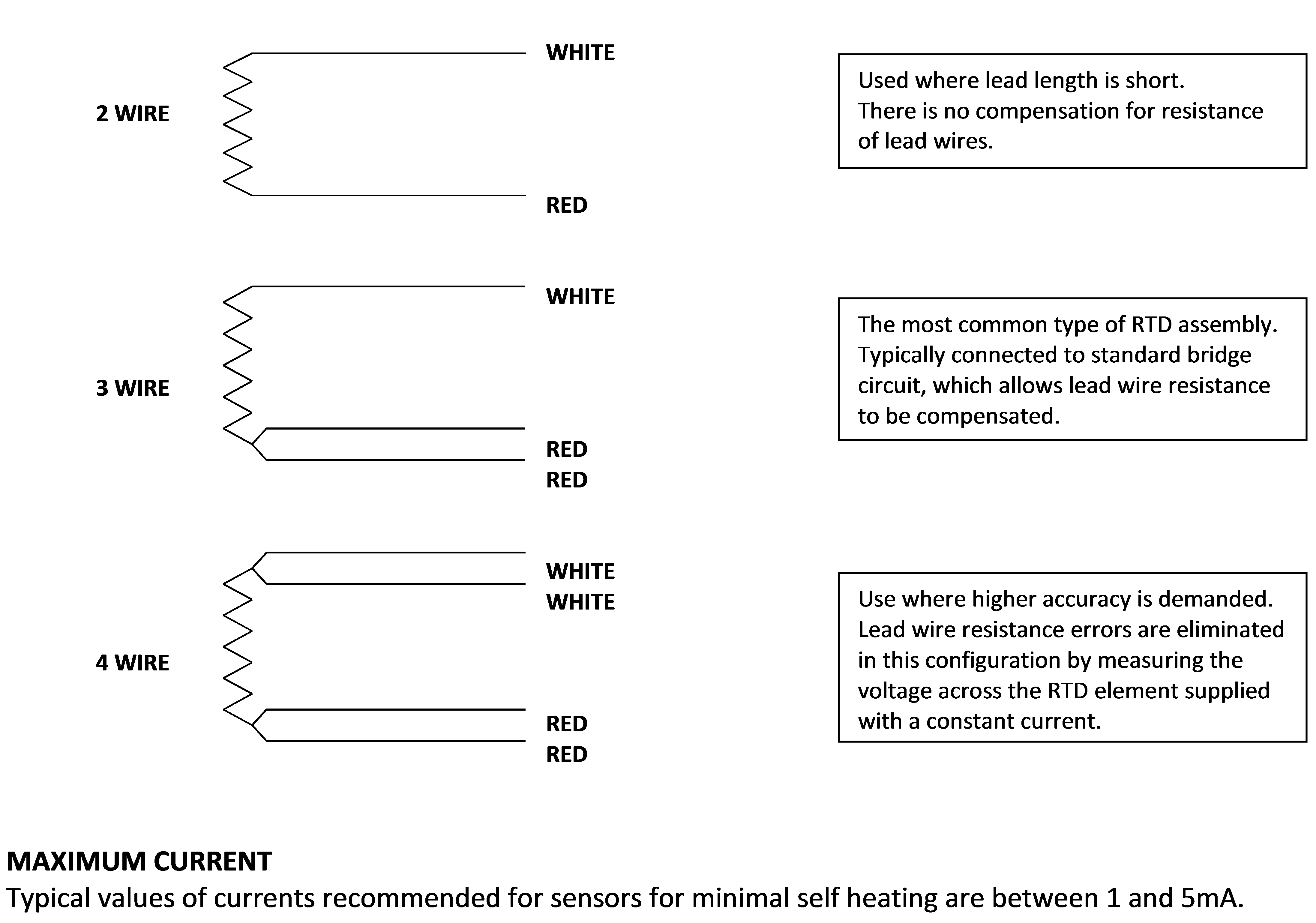
There are many options to consider when choosing the correct RTD element for your requirements:
- Temperature rating
- Tolerance, accuracy, and interchangeability
- Time response
- Distance from control or measuring equipment
RTDs are suitable for many applications across a wide range of industries including, air conditioning and refrigeration, stoves and grills, textile production, food processing, plastics, petrochemical, and temperature measurement of air, gases, and liquids. Use an RTD when you require accuracy and stability and where accuracy must extend over a wide temperature range.




